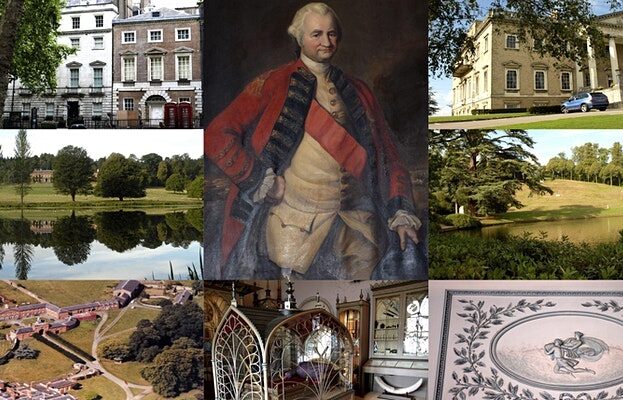
How Robert Clive spent his Bengal loot after the Battle of Plassey (23 June 1757) buying lavish properties and estates in Britain
This event has been rescheduled this event during Brick Lane Circle’s Bengal History Week 2021. On 13 October 1761, Robert Clive was allowed to call himself ‘Baron Clive of Plassey, County Clare, in the Kingdom of Ireland’, after he was given an Irish Peerage.
How Robert Clive spent his Bengal loot after the Battle of Plassey (23 June 1757) buying lavish properties and estates in Britain
Wednesday 13 October 2021, 7-9 pm
By M Ahmedullah
Robert Clive, the conqueror of Bengal in 1757, allegedly committed suicide on 22 November 1774 at his home (45 Berkeley Square, Mayfair, London), the property he bought for £10,500 in 1761 soon after returning to Britain from the Plassey victory.
It was one of the many properties he bought from the large sum of money he received from the wealth looted from Bengal after the Battle of Plassey victory on 23 June 1757.
In 1906-07, on the 150th anniversary of the Battle of Plassey, at the proposal of Lord Curzon, to revive Clive’s memory, two statues of him were erected, one in London and one in Calcutta.
The founder of the British Indian Empire, Robert Clive, has been described as “Clive of India” and the Battle of Plassey as his “finest hour”. This was partly because he used his skills and genius to divide the enemy and score a spectacular victory.
Rober Clive had, reportedly, under his command about 800 British and European forces complemented by about 2,000 native sepoys. On other hand, according to the victorious British, Sirajuddaula – his enemy, Sirajuddaula, the Nawab (independent ruler) of Bengal – had 50,000 troops under his command, divided into five divisions. Each of the divisions was commanded by a general. They were: Mir Jafar Ali Khan, Yar Latif Khan, Rai Durlan, Mohal Lal and Mir Madan.
When the two armies met at the field of Plassey on the morning of 23 June 1757, three of the Nawab’s commanders not only did not join in the battle against the British forces but misled the Bengal ruler to a pathetic defeat. Only Mir Madan and Mohal Lal were loyal, who paid with the ultimate prices to protect Bengal from the British forces.
At the presentation, I will try to provide a rough idea of the:
1. Total official income that he derived from his Bengal conquest on 23 June 1757 – share of the spoils, annual revenue from a Moghul Jagir (1759-1774), returns from his investment from his share of the Bengal loot (rent from estates and dividend from and price increase of his East India Company shares) and his salary as the governor-general of Bengal during his third voyage to Asia (1764-67).
2. Total expenditures – gifts to friends and relatives; purchase of properties and estates; improvement and renovation works; buying artworks, furniture, etc. I will also explore some of the political, social and economic reasons for his expenditures.
I hope you will join the seminar on 13 October and the reading play on 18 December 2021; engage with me; share your knowledge and perspectives and help make the events very informative.








